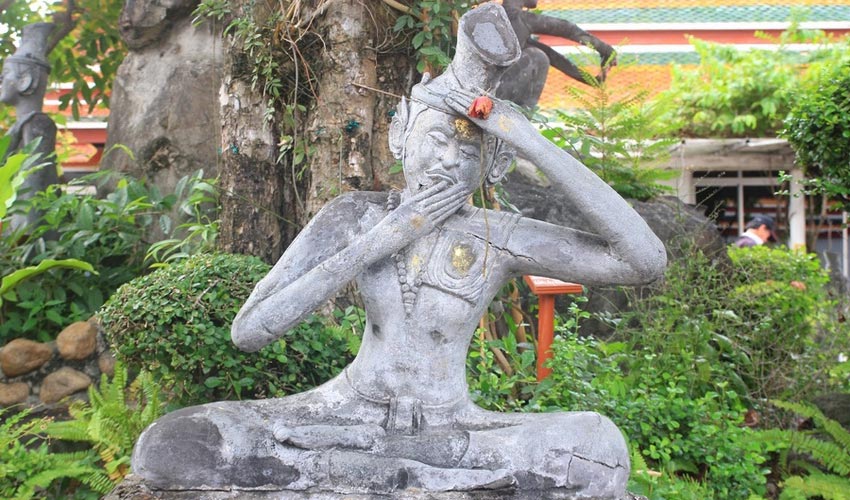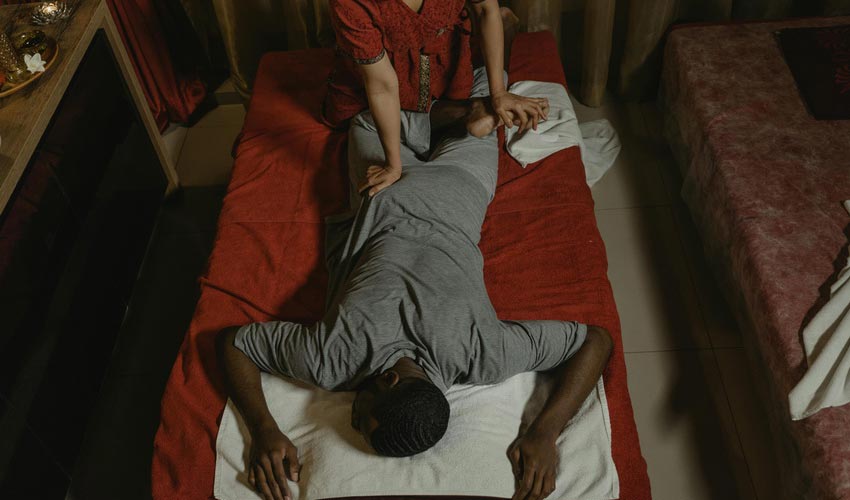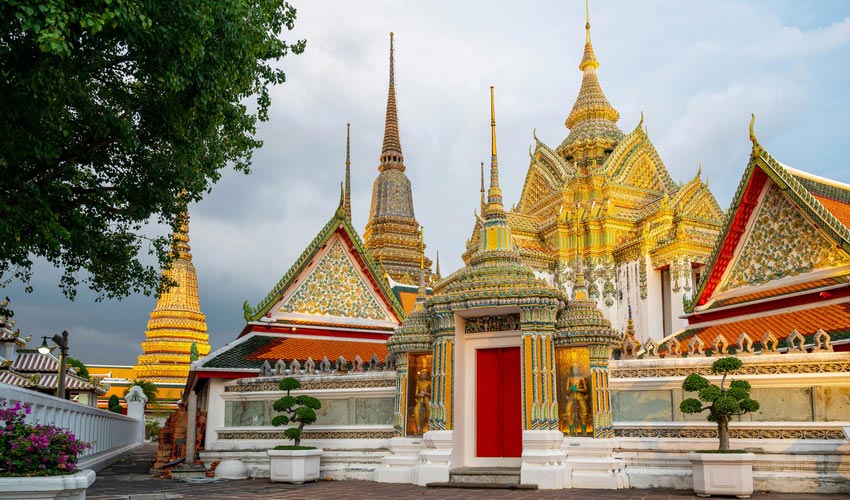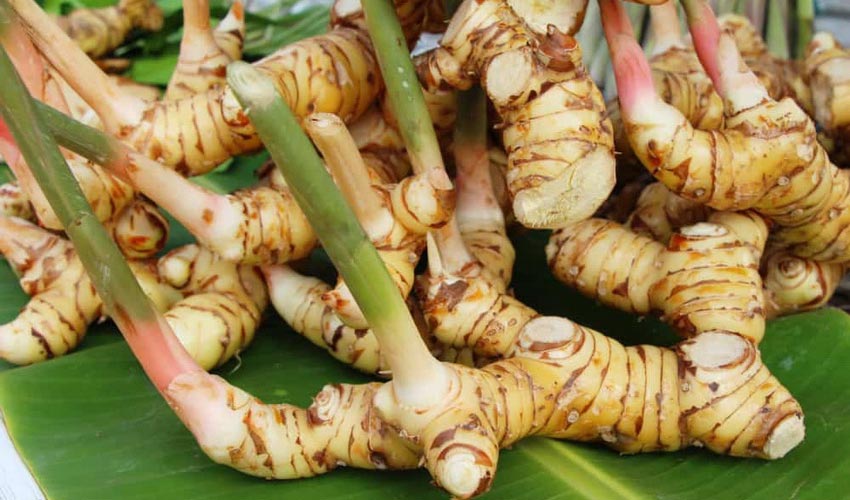Traditional Thai Massage (Nuad Thai) - Recognised as UNESCO's Intangible Cultural Heritage
For the past 23 years, I have had the privilege of calling Chiang Mai, Thailand my home, immersing myself in the rich culture and traditions of this vibrant city. One of the greatest treasures that I have discovered during my time here is the undeniable benefits of traditional Thai massage. Not only is it a deeply relaxing and rejuvenating experience, but it also holds a special place in my heart as a form of self-care and wellness therapy. The ancient techniques and holistic approach of Thai massage have helped me alleviate stress, improve my flexibility, and enhance my overall well-being. The skilled therapists and serene atmosphere of the massage studios in Chiang Mai have become my sanctuary, providing me with a sense of peace and restoration that I cherish deeply. Often traditional Thai Massage takes place at an ancient Buddhist temple making the experience even more serene. I am grateful for the opportunity to indulge in this ancient healing practice, which has become an integral part of my life in this magical city. Let’s try to find out more about the origins of traditional Thai Massage, methods and health benefits…
The ancient and healing art of Thai Massage, also known as Nuad Thai is a traditional therapy that has been practiced for centuries in Thailand. This therapeutic technique involves a skilled practitioner using pressure, compression, and rubbing to stimulate blood flow. A session performed by a certified practitioner can alleviate muscle soreness as well as relieving discomfort of various ailments such as insomnia, depression, rheumatism, Parkinson's, and Office Syndrome. What sets Thai Massage apart is the incorporation of fragrant herbs and spices into the session, creating a sensory experience that enhances the therapeutic benefits. The combination of gentle pressure and aromatic stimulation creates a blissful and rejuvenating experience that leaves clients feeling relaxed and refreshed. The effectiveness of Thai Massage is so remarkable that it has been likened to a panacea. In fact, a French envoy to the Ayutthaya Kingdom once described Thai Massage as a treatment where the sick were gently compressed and stretched, and pregnant women were treated to help them deliver their babies with ease. This ancient practice has stood the test of time and continues to offer healing and relief to those who seek its powerful benefits. I recommend when visiting Thailand to experience the magic of Thai Massage and discover a world of relaxation and rejuvenation. I’m sure that many who experience a traditional Thai Massage are eager to return for more.

Herbs & Spices
Herbs and spices have long been used in traditional medicine to alleviate a variety of symptoms, and the use of compression balls filled with these potent ingredients is a common practice in many cultures. These balls are formulated with specific herbs and spices tailored to address the individual needs of patients. For example, Bengal Root, a cousin of Ginger, is often used by massage therapists to reduce soreness and inflammation, while Kaffir Lime Zest, rich in essential oils, is believed to combat dizziness. Lemongrass is used to induce sweating and detoxify the body, while Tamarind leaves nourish the skin and provide relief from dryness and itching. Soap pod wattle is known for its skin-nourishing properties and ability to soothe irritation, while turmeric is used to improve skin health and address various skin conditions. Sea Salt is another common ingredient in compression balls, as it helps to cool the body and enhance the benefits of other herbs. Camphor, with its pleasant scent and essential oils, is included in many formulations as it is believed to aid in heart function. Pandan Leaves, Pomelo Zest, Mountain Ginger, Galangal, and Eucalyptus are all popular additions to Thai massage compression balls, each bringing its own unique benefits to the treatment. Overall, the use of herbs and spices in compression ball therapy is not only a traditional practice but also a holistic approach to healing that targets specific symptoms and promotes overall well-being. By incorporating these natural ingredients into massage therapy, practitioners are able to enhance the therapeutic effects of the treatment and provide patients with a truly rejuvenating experience. Later I’ll explain more in detail about the benefits these herbs provide.
The Origins of Thai Massage - Exploring the Legacy of Jivaka Komarabhacca
The ancient practice of Thai massage has its roots in the Indian subcontinent, dating back to the time of Buddha. Jivaka Komarabhacca, a respected physician who served King Bimbisara and later the Buddha himself, is credited as the founder of the Hermit Exercise (rusee dad-ton) – a series of postures that form the foundation of Thai massage. Jivaka's expertise in medicine was honed in the city of Takkasila, known for its renowned medical school. He was famous for his compassionate and fair treatment of his patients, earning him a beloved place in the community. As a devout Buddhist, he achieved the state of sotapanna, the first stage of enlightenment in Buddhism. Jivaka's teachings and techniques were passed down through generations, spreading across South and Southeast Asia. Today, Thai massage continues to be cherished for its holistic approach to wellness and its ability to promote relaxation, healing, and balance in the body. Its rich history and connection to ancient Buddhist principles give it a unique and revered place in the world of traditional healing practices.

Introducing Thai Massage to the General Population
Centuries ago, Thai massage was a practice reserved exclusively for the elite, the nobility, and royalty. However, its origins can be traced back to the Sukothai Kingdom under the rule of King Ramkamhaeng the Great, who reigned from 1279 to 1298. It was during his time that a stone inscription was discovered, revealing the use of herbs in massage - a revolutionary concept that would pave the way for the future of Thai massage therapy. When jumping forward to the Ayutthaya Kingdom and the reign of King Narai the Great (1656-1688), we see a significant shift in the status of massage therapists. They were now considered royal servants, receiving high ranks and even land ownership as a form of recognition for their skill and dedication. This era marked a turning point for Thai massage, as it began to establish itself as a revered and respected practice in society.
Under King Narai's reign, a collection of herbal recipes and treatments was documented in what is now known as Tamra Osot Phra Narai (King Narai’s Text of Herbal Medicine). This text emphasised the importance of herbal medicines in healing and treatment, setting a precedent that would be carried on for generations to come. As the Rattanakosin Kingdom came into power (1782-present), King Rama I (1782-1809) took significant steps to preserve and promote Thai massage. He ordered the renovation of Wat Pho, a popular Buddhist temple, and designated it as a centre for the practice of Thai massage. Here, herbal medicine formulas were prominently displayed, ensuring that the public could also benefit from their healing properties and understand their use. Through the efforts of these visionary rulers and the dedication of skilled practitioners, Thai massage evolved from a luxury reserved for the elite to a cherished and integral part of Thai culture and tradition.
Today, Thai massage continues to be celebrated worldwide for its unique techniques and healing properties, a testament to its enduring legacy that has withstood the test of time. Thai massage remains highly in-demand today, with more and more approved massage therapy schools having opened across the country during the reign of Rama IX (1946–2016). Seeing the popularity of Thai massage, Rama IX encouraged Wat Pho’s Chetawan Massage School, which by then had come into existence, to continue offering their four popular courses, while constantly improving on their standards to meet local and global demands and expanding their reach. The Chetawan Massage School now has four branches in Thailand: in Wat Pho, Chaeng Wattana, Salaya, and Chiang Mai. Given the history of Thai massage, it may be unsurprising, perhaps, that there are now two styles of Thai massage: the royal style and the commoner’s style. The royal style was traditionally used to massage aristocrats and royalty. This type of massage is gentler and more elegant, using only hands, unlike the commoner’s style, which also employs the feet, knees, and elbows. The royal style also requires the recipient of the massage to either sit up or to lay down on their backs or side, but never uncomfortably on their stomach. The commoner’s style, which is more likely what one gets requesting a Thai massage, can be less gentle, and, as aforementioned, in this style, the massage therapist may also use parts of his or her body viewed as a little less refined: feet, knees, and elbows. This is the style of massage featured at Wat Pho in Bangkok.

Enhancing the Practice of Thai massage through Knowledge & Guidelines
Established in 1982 by Professor Uey Ketsing, the Ayurveda College for Traditional Medicine quickly gained recognition and was later integrated into the prestigious Siriraj Hospital’s tertiary study programs. One of the prominent teachers at the College was Narongsak Bunratanahiran, a renowned therapist specialising in Thai massage. In 2001, the Thai Ministry of Health officially recognised Thai massage as a vital branch of traditional Thai medicine. This recognition led to the imposition of certain requirements for people seeking to become licensed therapists in the field. One such requirement is a certificate from an accredited Thai massage school.
For instance, at Wat Pho, a renowned massage school in Bangkok, students are required to complete 153 hours for a basic massage therapy course and 380 hours for an intermediate course before they can graduate and become licensed therapists. These regulations ensure that therapists possess the necessary skills and knowledge to provide effective treatments to their clients. The popularity of Thai massage extends beyond Bangkok to other regions like Chiang Mai, where 16 registered massage schools cater to a diverse group of students. Interestingly, 90% of the annual intake at these schools consist of foreign students, highlighting the global appeal of Thai massage and the growing interest in traditional Thai healing practices worldwide.
Outside Thailand & Thai Practitioners
The practice of Thai massage is not only a staple in traditional Thai culture, but it also proves to be a lucrative industry, bringing in billions of Thai Baht in revenue each year. This industry has seen significant growth internationally, especially in Europe and North America, where businesses specialising in Thai massage can generate up to $8,000 per month. However, becoming a licensed massage therapist in the United States requires aspiring professionals to undergo extensive and sometimes costly training courses. It is important to note that while Thai massage offers a plethora of benefits, it is not a one-size-fits-all solution to every ailment. Therapists are trained to recognise when a massage may not be suitable for a client, such as in cases where individuals have recently eaten, are suffering from certain medical conditions like diabetes, osteoporosis, cancer, high blood pressure, or are pregnant. Additionally, those who have recently undergone surgery, have open wounds, or have prosthetics should refrain from receiving a massage for at least a month.
Thai massage has proven to be effective for the majority of people in various circumstances, but practitioners emphasise the importance of only administering the therapy when the body is prepared to receive and benefit from it. The ultimate goal of Nuad Thai is to heal, and this can only be achieved when the body is in an optimal state to receive the therapy.
Used That Herbs & Spices
- Eucalyptus Oil…is a popular choice for massage therapy due to its numerous therapeutic benefits. Known for its invigorating and relaxing properties, Eucalyptus Oil is often used to alleviate muscle tension, reduce inflammation, and promote overall relaxation. Its cooling sensation can help to soothe sore muscles and joints, making it an ideal choice for athletes or those suffering from chronic pain. Additionally, Eucalyptus Oil is praised for its ability to improve circulation, making it a valuable tool in promoting healing and detoxification within the body. Its antibacterial and anti-inflammatory properties also make it a great choice for those looking to combat skin conditions such as acne or eczema. Overall, the versatile nature of Eucalyptus Oil makes it a valuable asset in any massage therapist's arsenal, providing both physical and emotional benefits to clients seeking relief and relaxation.
- Kaffir Lime Oil… is a key ingredient used in Thai massage due to its numerous therapeutic properties that enhance the overall experience and benefits of the massage. Known for its refreshing and invigorating citrus scent, kaffir Lime Oil helps to uplift the spirits and create a sense of relaxation and harmony. It also possesses powerful anti-inflammatory and anti-microbial properties, making it ideal for soothing sore muscles and reducing tension. In addition, kaffir lime oil has been used for centuries in traditional Thai medicine for its ability to promote mental clarity and reduce stress. When used in massage, kaffir lime oil can help to stimulate circulation, increase energy levels, and promote a deep sense of well-being. Its rejuvenating and purifying properties make it a popular choice for Thai massage practitioners looking to provide their clients with a truly indulgent and therapeutic experience.
- Kaffir Lime Zest…is a key ingredient in Thai herbal massage balls due to its numerous health and wellness benefits. The vibrant and aromatic citrus peel is packed with essential oils that possess antiseptic, anti-inflammatory, and invigorating properties, making it an ideal addition to massage balls. The zesty fragrance of Kaffir Lime helps to uplift the senses and promote relaxation, creating a soothing and rejuvenating experience for the mind and body. Additionally, the antioxidants found in Kaffir Lime Zest can help to detoxify the skin and improve circulation, enhancing the overall effectiveness of the massage therapy. Its natural antibacterial properties also make it a great choice for cleansing and revitalising the skin, leaving it feeling refreshed and rejuvenated.
- Pandan Leaves… are used in Thai herbal massage balls for their numerous health and wellness benefits. These vibrant green leaves not only add a pleasant aroma to the massage experience, but they also contain powerful anti-inflammatory and pain-relieving properties that can help soothe sore muscles and reduce inflammation. In addition, Pandan Leaves are rich in antioxidants, which can help protect the skin from damage caused by free radicals and promote overall skin health. Their aromatic compounds have been known to have a calming and stress-relieving effect, making them the perfect addition to a relaxing massage session.

- Galangal… also known as Mountain Ginger, is another key ingredient in Thai herbal massage balls due to its numerous health benefits and therapeutic properties. This aromatic rhizome is known for its anti-inflammatory, anti-bacterial, and antioxidant properties, making it a popular choice for natural pain relief and muscle relaxation. In Thai traditional medicine, Galangal is believed to improve circulation, reduce tension, and promote overall well-being. When infused into herbal massage balls, Galangal's invigorating scent and healing properties are released through the warmth of the massage, helping to soothe sore muscles, alleviate stress, and enhance the overall massage experience. Its stimulating and revitalising effects make galangal a highly prized ingredient in Thai herbal massage balls, offering a holistic approach to healing and relaxation for both the mind and body.
- Camphor… has long been celebrated in traditional Thai medicine for its numerous therapeutic benefits, which make it a valuable ingredient in herbal massage balls. Extracted from the bark of Camphor trees, this powerful substance possesses anti-inflammatory, analgesic, and antispasmodic properties that promote relaxation and alleviate muscle tension. When incorporated into massage balls, Camphor helps to enhance the overall experience by providing a soothing and invigorating sensation that penetrates deep into the muscles, relieving aches and pains effectively. Furthermore, the refreshing aroma of Camphor is known to stimulate the senses, promoting mental clarity and reducing stress, creating a holistic and rejuvenating experience for the mind, body, and spirit. In Thai herbal massage balls, Camphor is a main ingredient that enhances the therapeutic benefits of the massage, making it a popular choice for those seeking relief from muscle discomfort and relaxation.
The majority of herbs and spices commonly found in massage balls can also be found in traditional Thai Massage Balm. Personally, I prefer the latter as it contains all of these beneficial herbs in a concentrated form. For me it is important that the base of herbal massage balm is beeswax or coconut oil. Most balms use petroleum jelly as a base, even the world-famous Tiger Balm! Petroleum jelly has long been a popular ingredient in massage balms due to its moisturising properties, but many people are unaware of the potential harm it can cause to the skin. Petroleum jelly is a by-product of the oil refining process and is known to clog pores, leading to breakouts and irritation. On the other hand, Beeswax or Coconut Oil is a natural alternative that offers similar moisturising benefits without the drawbacks of petroleum jelly. Beeswax is rich in vitamin A, which helps to rejuvenate the skin and promote healing. Additionally, beeswax has anti-inflammatory properties that can soothe sore muscles and reduce inflammation. Overall, choosing a massage balm with beeswax as opposed to petroleum jelly is a healthier and more beneficial option for both the skin and body. If you want to experience the real deal with regards to Herbal Thai Massage Balm, try the comfortably warming Leopard Brand Balm, it really works alleviating bodily discomfort.
''In this hectic life, we have no time to take care of ourselves, hence massage is needed for rejuvenation and stress reduction. A lot of people are looking for quick fixes: like, they are taking medications, and they are doing other things which are not healthy. But massage is very holistic and natural.'' - Nargis Fakhri






















